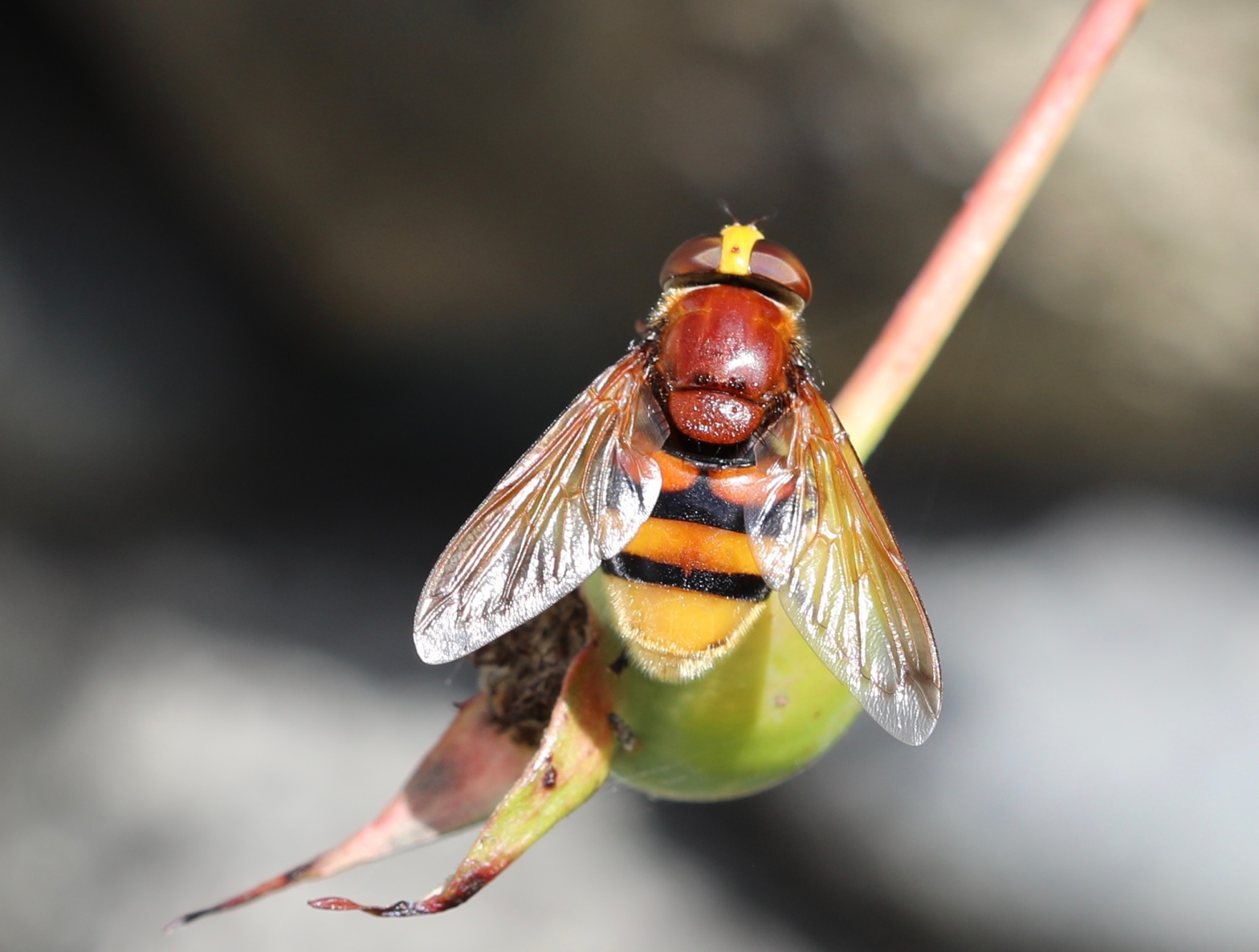I see quite a few posts on the Guernsey Wildlife and Insects of the Channel Island Facebook groups showing this impressive hoverfly and asking what it is. This is great for the people who do post as the answer comes back that it is quite harmless and is a good pollinator. I do fear that many are squished by people who don’t know and assume that it is a hornet or something with a nasty sting. It mimics the European Hornet, (even with the buzzing sound of its flight) but with the advent of invasive Asian Hornets, it is easy to understand why many people are nervous of them. Another reason for spreading the word about our native wildlife and the importance of biodiversity.
Coming at around 25mm (nearly an inch) this is the largest hoverfly seen in the bailiwick. they are very handsomely coloured with a bright rust-brown thorax and orange-yellow and black striped abdomen. The photo below shows the golden hue on its wings.

It is increasing its range northwards in the UK where it first became established in the 1940s. I think here in Guernsey it can be seen almost anywhere, as the adults feed on garden flowers. They are on the wing between May and September, peaking in July and August. The top photo was taken in my garden on 31.08.17
It’s interesting to note that the larvae are an example of commensalism. The adult female lays her eggs in bees nests, hornet nests and those of some wasps. The larvae hatch out and live in the nest where it is safe from predators but there is no disadvantage to the other inhabitants. After some time, it will pupate under the soil to emerge as an adult the following spring. I have noticed a Bumblebee nest in my hedge this year (2021) so I hope there will be more Hornet Mimic hoverflies enjoying a wide range of my garden flowers next year.
